Chivas Regal Ultis XX: A Blended Whisky to Rival Great Single Malts
by Ken Gargett
Mention Chivas, more properly Chivas Regal, to a group of whisky lovers and the response is likely to divide the room. There will be those who will insist that anything short of single malt is a betrayal of the very idea of the spirit itself. Others will recall a time when Chivas was seen as the finest whisky on the planet. And some will look at it as a very fine whisky, a superb example of the art of the blend.
I’ll confess that there have been times when I have fallen into all three categories (obviously, not at the same time), but the years do tend to soften some views and the insistence on single malt or nothing is now a little antiquated. Remember that for all the fuss about malts, blended whiskies make up at least 90% of sales. That said, blended whiskies are cheaper and easier to produce, which has no doubt contributed to the perception that malts must be better.
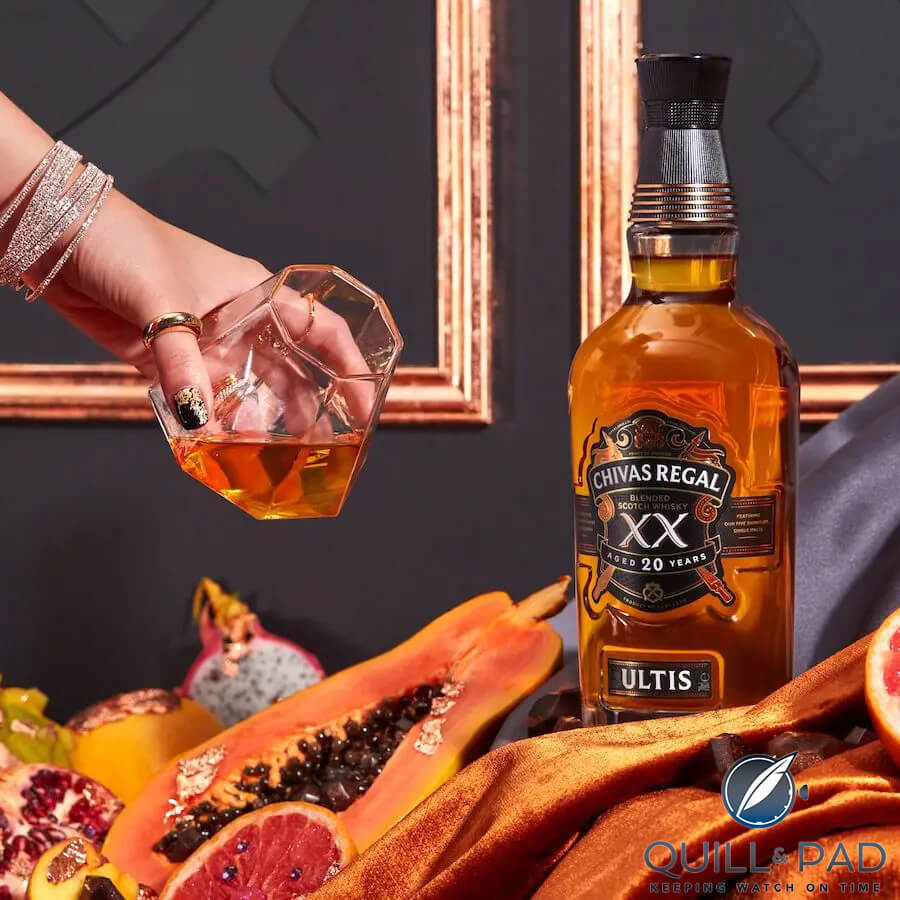
Chivas Regal Ultis XX
So what is the difference and is one style superior to the other? These days, conventional wisdom suggests that single malts are superior, though thankfully acknowledges that there are some amazing blends. Tell a fan of Johnnie Walker Blue, Chivas 18, Ballantine’s 30-Year-Old or Dewar’s 25-Year-old, as just a few examples, that their favorite whisky is inferior and stand well back.
Of course, unless your whisky is from a single cask, ‘blending’ is involved. Your traditional single malt is basically single pot-distilled, malted barley whisky which is then aged in oak barrels. The single malt whisky you love is almost certainly from a single distillery and not a single barrel. Nothing wrong with that, though it is not quite what many assume.
The blending together of several barrels, or sometimes thousands, is termed ‘vatting’, though more commonly is simply called ‘blending’. Those individual barrels will often be very different and perhaps have a discrepancy in their ages of decades. Again, nothing wrong with that and it helps to create complexity. However, these single distilleries tend to treat the word ‘blend’ much like mentioning Voldemort at Hogworts.
We could go down the rabbit hole that is age statements here, but best leave that for another time. Suffice to say, the age indicated should be the age of the youngest component – hence, that 12-Year-Old you are sipping as you read this may actually be considerably older. That said, extreme age does not always reflect extreme quality, though it usually does come with an extreme price.
There is absolutely no reason, if the whisky appeals to you, that you should not be just as happy with NAS whisky – no age statement whisky.
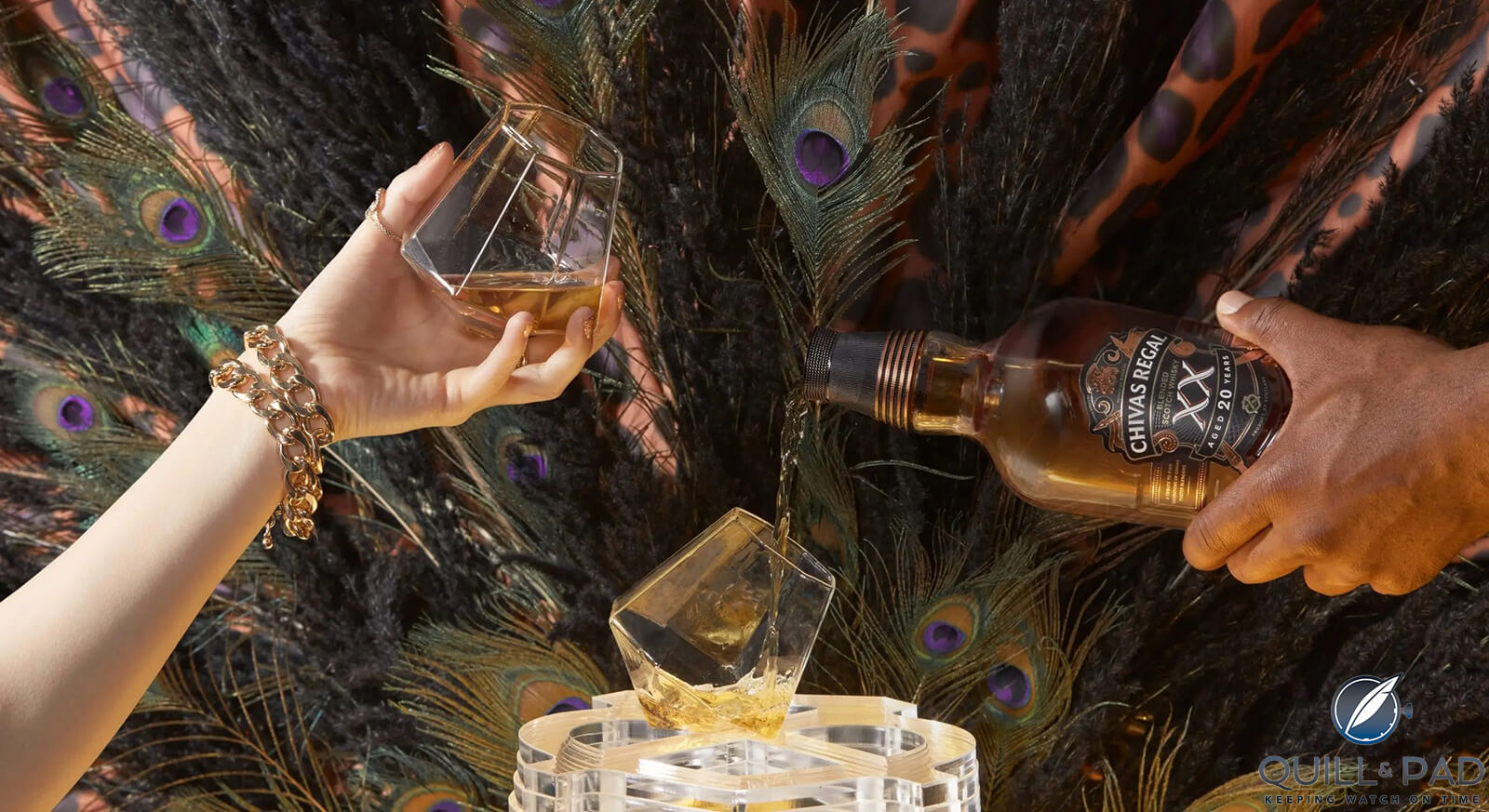
Chivas Regal Ultis XX
Blended whisky is that which is a blend of single malts and grain whiskies. Malts use the small batch pot still method as opposed to continuous stills for grain whiskies. Both can be made in large volumes, though it is easier, and faster, to do so with the grain whiskies. Malts stick with malted barley while grains can incorporate a range of varieties, including unmalted barley, rye, wheat and corn.
Oak also has varying effects on malts and grains, a matter for each distillery and blender. A single grain Scotch whisky would also be the product of a single distillery. You can also have blended malts, coming from a range of distilleries. As ever, nothing is simple.
One advantage of grain whiskies is that the method allows for such large blends that it is much easier to maintain consistency of flavor – a little like larger house champagnes in comparison with those of growers. Of course, blending for this consistency is no easy task. In fact, it requires incredible skill as every barrel is marginally different and the blender could easily get it wrong, if he is not careful. The blender has a basic understanding of what he needs to do, but it will require gentle finessing.
The master blender at Chivas, Sandy Hyslop, has said that “blending whisky is like cooking: the ingredients are all unique but when those ingredients come together, you can create something extraordinary and complex”. The team talk about how a single malt may bring a ‘one-of-a-kind’ flavor which might be preferred, as opposed to a blended whisky which can conjure something ‘rich and complex’ and bring together ‘a world of flavors’.
At Chivas Regal, the blend of malts and grains come from a range of distilleries, perhaps most notably the Strathclyde and Longmorn distilleries, along with the very famous Strathisla distillery. It is Strathisla that produces the single malt that many see as the heart of the Chivas blends.
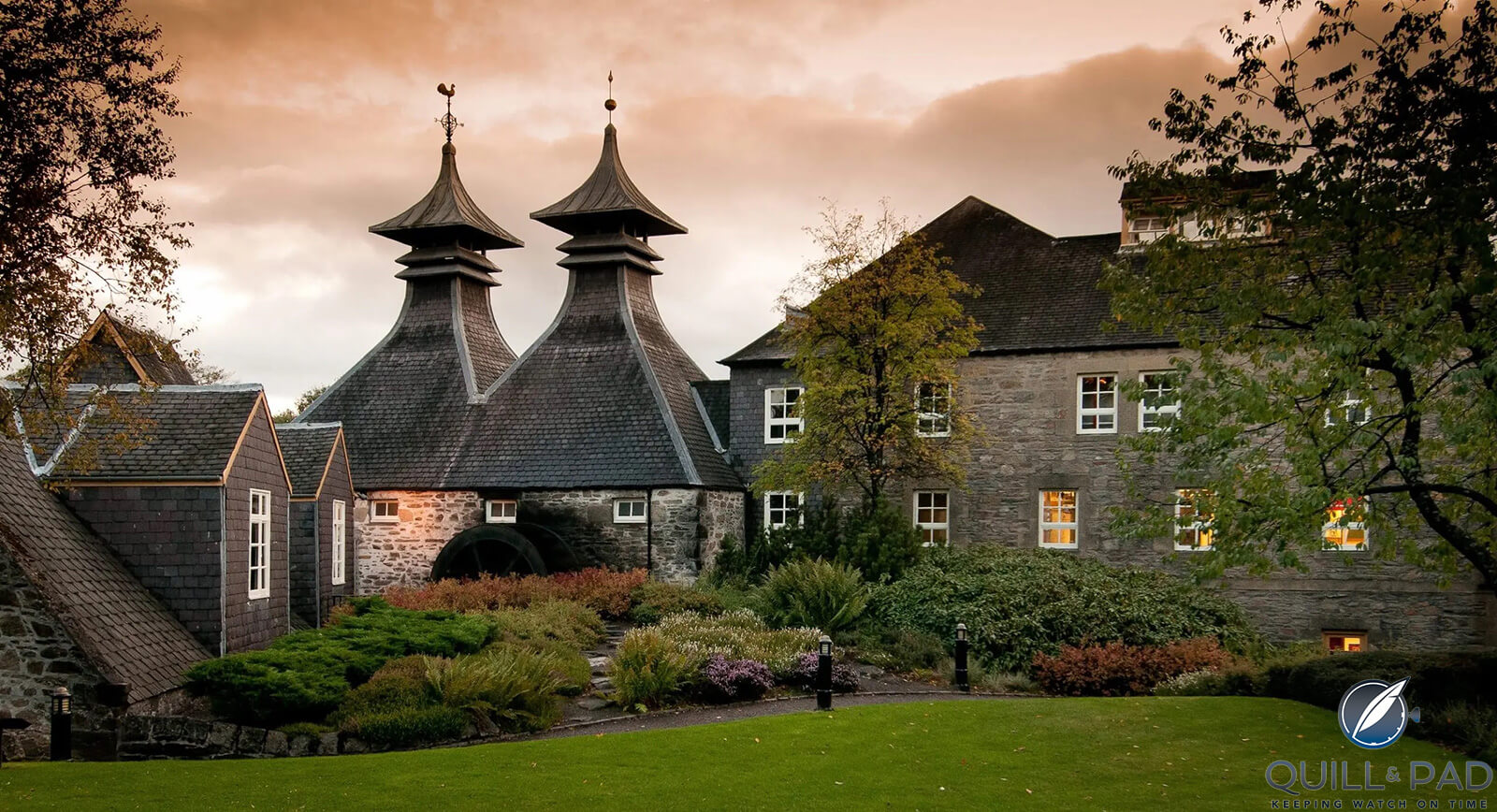
Chivas Strathisla Distillery
The Strathisla Distillery dates back to 1786 and provides a style the team see as “full of the rich, floral and fruity notes”, so important to their whiskies.
At Chivas, Ultis is the only one of their whiskies that does not include any grain whisky. Rather, it incorporates five single malts – the idea being that this is a tribute to five generations of their master blenders.
The Strathisla Distillery is in the Speyside region of Scotland, the oldest continuously operating Highland distillery.
Current owners of Chivas Brothers are Pernod Ricard. It sits as the world’s fourth largest selling Scotch whisky since 2016, with annual sales over 4.4 million cases. They have a range of whiskies with their 12 seen as their standard bearer. They also have an 18 and a 25, as well as a number of special releases, including the above-mentioned Ultis.
The name dates back to the Chivas brothers, James (born 1810) and John (born 1814). Two of fourteen children, they saw better prospects further afield and headed to Aberdeen. James joined a grocery business specializing in luxury goods, wines and liquor in 1828, becoming a partner a decade later. John worked in footwear. A Royal Warrant, granted to James’ business in 1843, boosted their reputation, with many patrons keen to follow the Royal example.
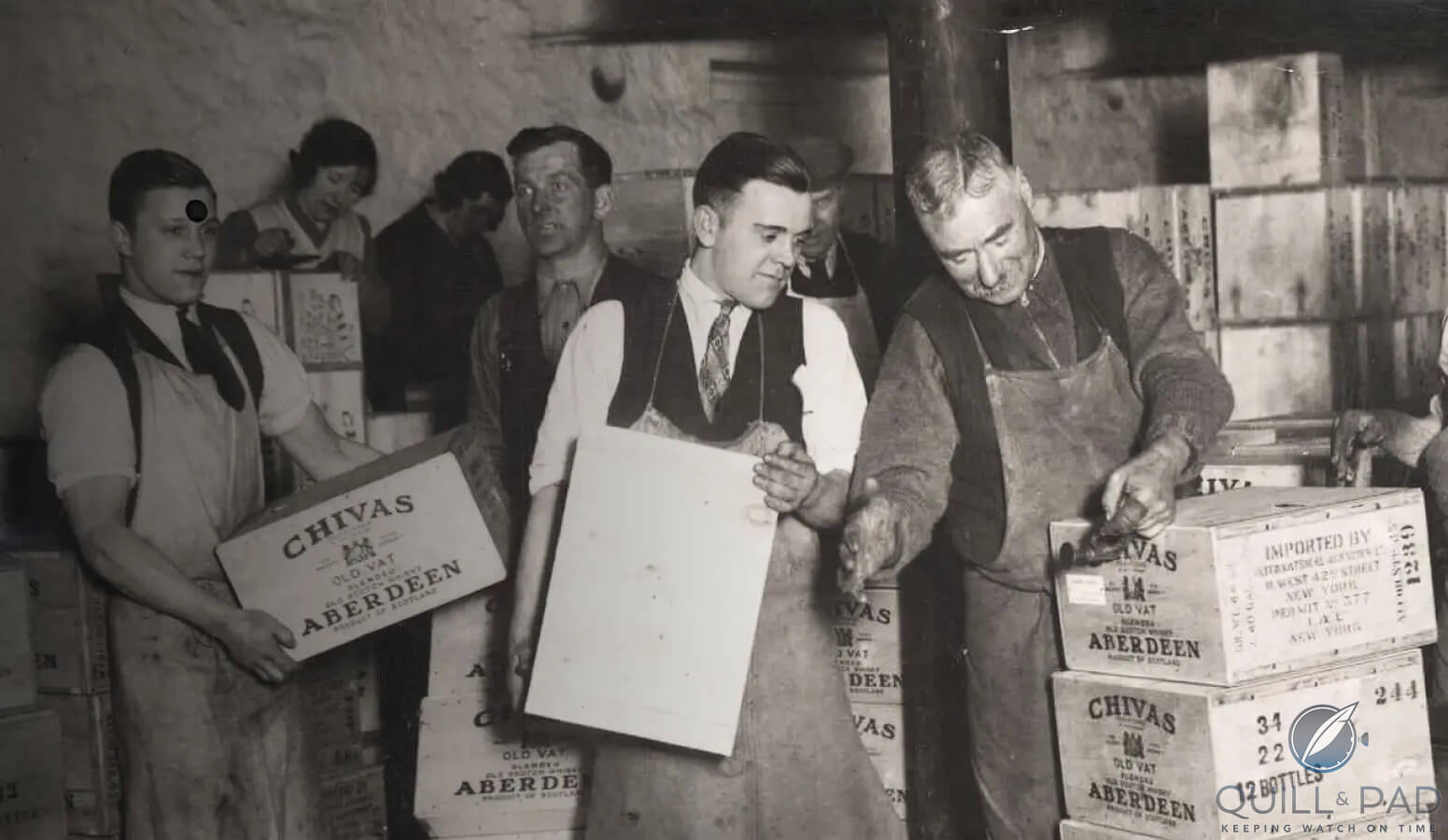
Chivas Regal historic photo
Distilling whisky became legal in 1823 and then, in 1853, vatting whisky in bond warehouses followed. James and his team decided to provide a much higher quality blended malt, a proprietary blend called the Royal Glen Dee. When James’ partner left the business in 1857, it became the Chivas Brothers and a ten-year-old blend of malts and grains called Royal Strathyhan was launched to great acclaim. They had been aging barrels of whisky in their cellars for many years before it was legally required, giving them a wonderful headstart on competitors.
James’ son, Alexander, worked with the business, but when he passed in 1893, that (and the successors buying out the remaining female members of the family) was the end of the family connection to the business. There was one proviso that was insisted upon for the sale by the women to proceed – the company name would remain ‘Chivas Brothers’ forever.
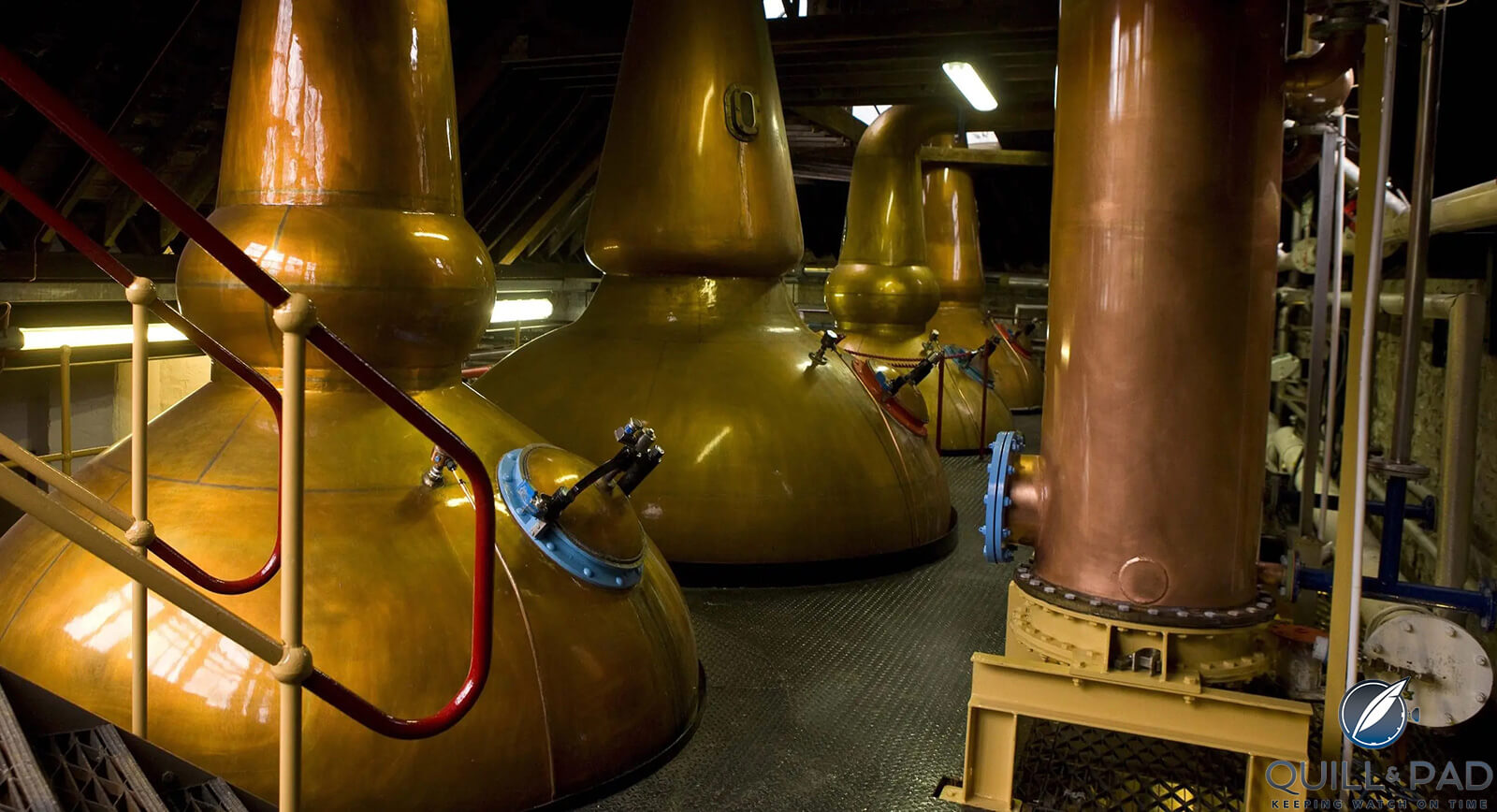
Copper whisky stills at the Chivas Distillery
The ‘Regal’ was first added in 1909 when they introduced a 25-Year-Old whisky, ‘Chivas Regal’, the world’s initial luxury aged whisky, to the United States. They enjoyed considerable success in the US, but a couple of wars, and no doubt Prohibition, threw the proverbial spanner into the works. The sale of the company in 1936 saw the focus switch to a 12-Year-Old whisky, which was soon seen as the standard for premium whiskies. Seagram’s bought the company in 1949 and a year later, the Strathisla Distillery, ensuring a continuing supply of its most crucial component.
From 1997, several new whiskies have been added to the range. Pernod Ricard purchased the company in 2001. They also made the legendary ‘Tribute to Honour’ whisky, offered in a diamond-encrusted bottle. Don’t feel too bad if it has escaped your radar – they only ever made 21 bottles and the price, if you ever found one, would be something like US$250,000 each.
Chivas plays a wide role in popular culture, often mentioned in films and shows, but can there be higher praise than for it than having been a great favorite with the legendary Hunter S. Thompson? They have been keen sponsors of Manchester United over the years (although that may not be looked upon favorably by everyone).
Also worth mentioning the extensive work that Chivas is undertaking in partnership to ensure the cleanest waters possible.
Ultis was introduced in 2016 and, after a period where supplies meant it was near unprocurable, I am assured it is back on the shelves, but in a slightly new guise.
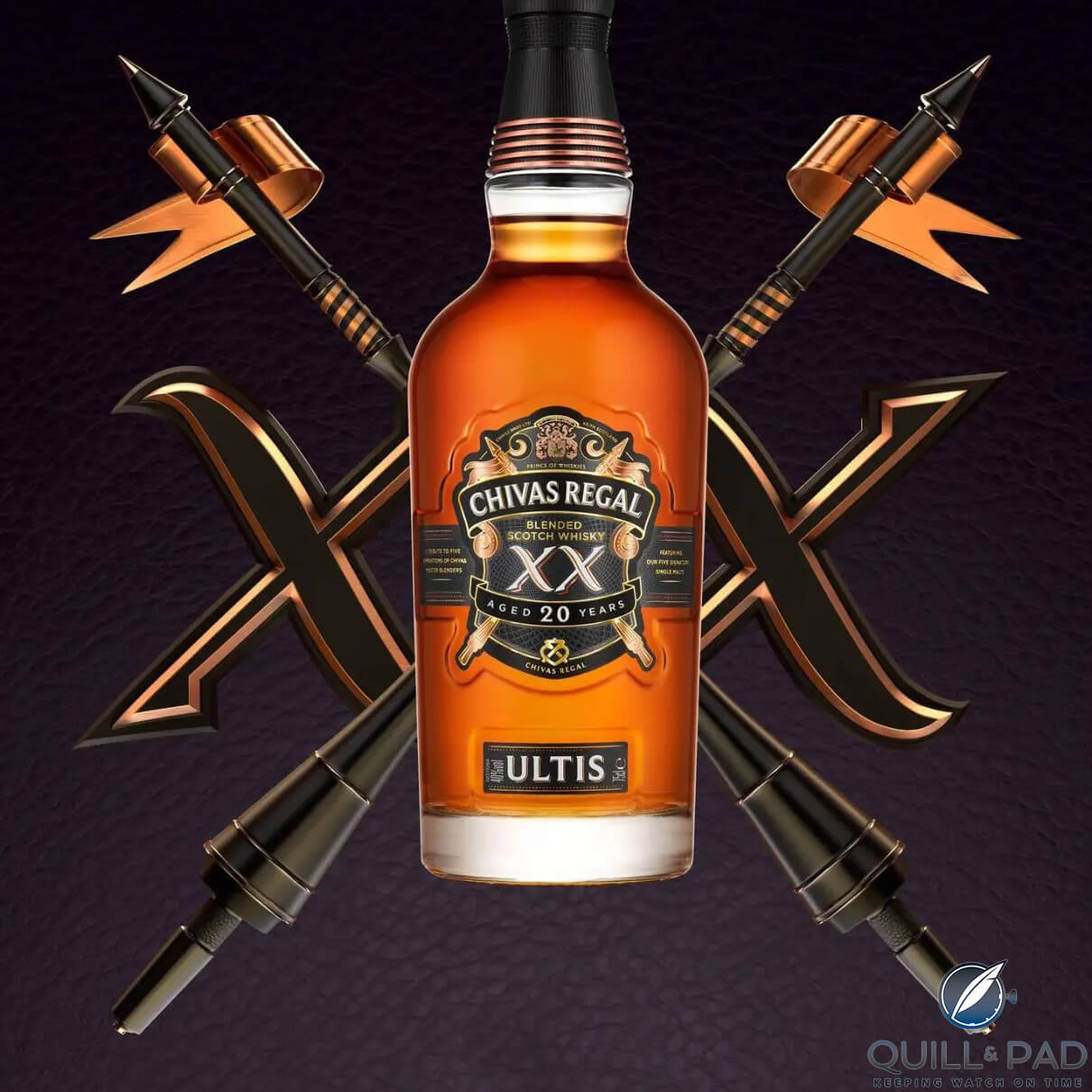
Chivas Regal Ultis XX
Ultis XX, ‘XX’ to represent a minimum of twenty years maturation, was distilled only in copper stills and is a blend of five of their most prized malts and with this blended malt whisky, the signature grain from Strathclyde. Maturation was in European and American oak casks. The specific whiskies in the blend include the legendary Strathisla single malt Scotch whisky, essential for any Chivas blend; Tormore single Speyside malt whisky, which the team see as offering ‘rich citrus orange notes’; Longmorn single malt Scotch whisky, which provides the ‘creamy vanilla toffee flavors’; Allt-a-Bhainne single malt Scotch whisky, for its ‘subtle spice and malt’; Breaval single malt whisky, which gives the ‘floral’ aromas; and finally, the Strathclyde grain whisky, which gives Chivas its ‘complex sweetness’.
For me, the Chivas Ultis XX exhibits a depth and complexity that puts to rest any argument that blended whiskies cannot sit with the finest malts. We have a burnished orange color. The aromas move through toffee and cinnamon, vanilla and red apples, caramel, cigar box and more. Balanced, mellow, complex and ever so long, this is a gorgeous whisky. Don’t hesitate.
For more information, please visit www.chivas.com/en/collection/chivas-ultis-xx/
You might also enjoy:
Yamazaki 12-Year-Old Japanese Whisky: Why Pricing Has Gone Through The Roof.
Sullivans Cove Makes The Self-Professed World’s Best Single-Malt Whisky, But Does It Measure Up?
Lark Rare Cask Series Para100 Whisky: Yes, Tasmania Makes World-Class Whisky.
Glenfarclas 50-Year-Old Malt Whisky: There’s No Substitute For Time
Yamazaki 12-Year-Old Japanese Whisky: Why Pricing Has Gone Through The Roof
Leave a Reply
Want to join the discussion?Feel free to contribute!



I think most people’s problem with Chivas Regal is that it’s rubbbish. I have tried the 12 and 18 and they’re pointless & overpriced.
The marketing images above are pathetic.
I deeply respect a good blend. I am a great fan of Dewar’s. And I blend at home!
But hyped-up, corporate drek is not worth talking about. Maybe this particular blend is lovely. I won’t give my money to such a company.
Hi Tam. Nice to hear from you. Been a while. And always good to get a different perspective. For me, that is a little harsh but each to their own. Spoke to some whisky fanatic mates of mine and while they are single malt first and foremost, they do greatly respect Chivas as an exceptional blender. I certainly very much enjoyed the Ultis XX and would recommend it but everyone needs to make their own assessment.
Look forward to your thoughts in future.